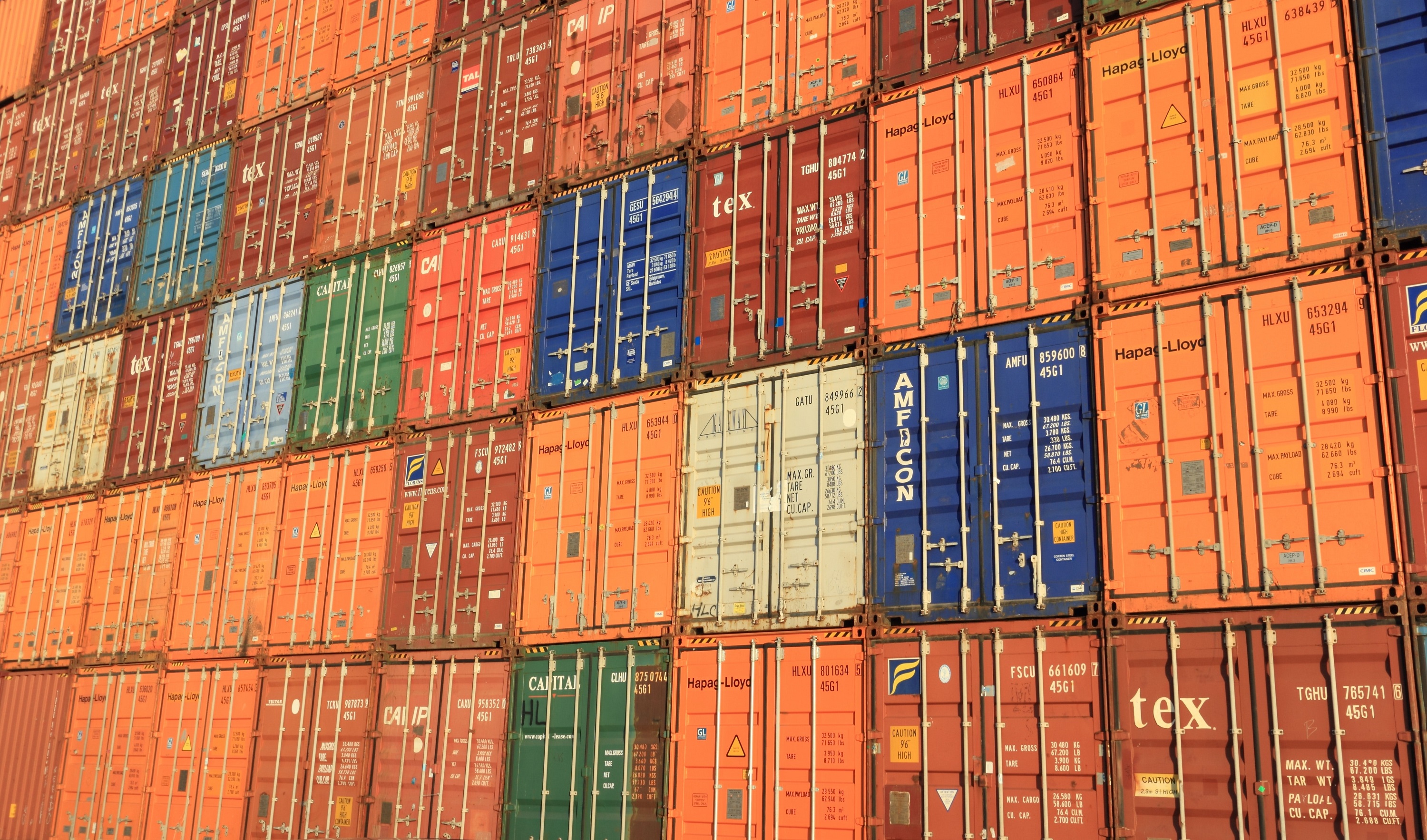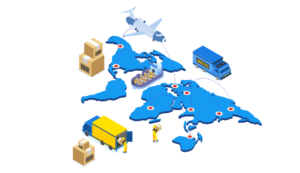Last Updated: Nov. 30, 2019 As of January 1, 2019, highway carriers entering the United States with Section 321 shipments are required to file an ACE eManifest for the Shipment Type “Section 321” and ensure that the shipment is transmitted on their ACE eManifest. What Is Section 321(CBP Shipment Type)? A Section 321 is a Shipment Type for goods to clear through the U.S. Customs and Border Protection (CBP). Carriers, freight forwarders, customs brokers and importer self-filers in all modes of transport must submit cargo and conveyance data to U.S. CBP before the carrier arrives at the border.
Since May 1, 2015, the use of the ACE (Automated Commercial Environment) system for all electronic manifest (eManifest) filings has been mandatory. Submission timeframes vary by mode of transport; for example, eManifest data must be validated by CBP one hour before arrival for non-FAST highway carriers and 30 minutes before arrival for FAST carriers.
These requirements allow customs officers to flag high-risk shipments more effectively and improve safety, while facilitating the clearance of low-risk goods. To avoid heavy penalties, delayed shipments and denial of entry, it’s important for carriers and trade participants to understand different shipment types, whether they should be manifested via ACE, how to file the eManifest in ACE, and what information should be included. Compliance with Section 321(CBP Shipment Type) requirements ensures that shipments reach their recipients in a timely manner.
ACE eManifest Initiative and Section 321
The U.S. Customs and Border Protection’s ACE eManifest initiative is in full swing, requiring carriers, freight forwarders, brokers, and self-filing importers to submit cargo and conveyance data electronically before the shipment arrives at the border. For rapid clearance processing and compliance, filers must understand the eManifest requirements for different shipment types.
Section 321 ACE Shipment (also called Section 321 CBP shipment and de minimis shipment) is a type of informal entry that facilitates the clearance of low value shipments at $800 or less. It does not require Customs bond and it is applicable to both non-resale personal and commercial imports, except for certain regulated/quota-class goods:
- Goods requiring inspection before release, regardless of value
- Goods subject to Anti-Dumping / Countervailing duty (ADD/CVD)
- Quota-class merchandise
- Goods regulated by the following Partner Government Agencies (PGAs): Food and Drug Administration (FDA), Food Safety Inspection Service (FSIS), National Highway Transport and Safety Administration (NHTSA), Consumer Product Safety Commission (CPSA), and United States Department of Agriculture (USDA)
Beginning July 2017, the FDA has provided exemptions for this restriction for biological samples for laboratory testing, dinnerware, cosmetics, radiation-emitting non-medical devices, and food (excluding ackees, puffer fish, raw clams, raw oysters, raw mussels, and food packed in airtight containers stored at room temperature).
Section 321 eManifest Minimum Value and Daily Transaction Allowed
On 24 February 2016, the minimum value or de minimis value of Section 321 has been increased from $200 to $800. This facilitates clearance processing and makes cross-border trade more affordable. It also reduces the amount of paperwork for low-value shipments into U.S.
On 10 March 2016, a restriction is passed to limit the duty-free release for Section 321 imports (retail value not exceeding the the US de minimis value threshold of $800) to one per day for every eligible importer, individual or company.
Section 321 eManifest Compliance and Best Practices
To avoid delayed shipments and heavy penalties, importers should follow best practices when declaring low-value goods under Section 321.
- Importers with a large amount of Section 321 shipments cannot consolidate the goods into one shipment if the total value exceeds $800.
- Each shipment must be manifested separately on the eManifest with unique shipment control numbers (SNC).
- Shipments must have consignee names and addresses; courier service or postal office addresses are not allowed.
- The U.S. Customs and Border Protection (CBP) or any agency that regulates specific goods/commodities can request for shipments to be examined and formal entries made regardless of value.
How to File Section 321 eManifest
Section 321 shipments are NOT required to be manifested if the truck entering the U.S. is solely transporting Section 321 merchandise. If there is a combination of different shipment types, all shipments must be manifested. To report a Section 321 shipment, the carrier must use the shipment type “Section 321” and include the information on their ACE eManifest.
A Section 321 shipment is different from a PAPS shipment, but the carrier must still provide a unique Shipment Control Number (SCN) and other information needed for ACE shipments. These include
shipper and consignee data, commodity description, merchandise value, and country of origin. As Section 321 shipment is an informal entry type, the carrier will not receive an entry number for the shipment. The driver must show the paperwork for Section 321 shipment to the Customs officer at the border when requested.
CBP Section 321 Shipment: Importer Self Filing
Importers may choose to file informal entries without using Customs brokers. Once the carriers notify the importers of the shipment’s arrival date, they must personally inform the entry port’s Customs office that they will file an informal entry to process and pick up the merchandise. The importers will need invoices, bills of sale and valid identification if they want to claim the goods personally at the port.
If the merchandise is arriving at a faraway port, and the importers have yet to arrange for freight forwarding or courier service, they can authorize another person to clear the goods on their behalf by writing a letter to the CBP Port Director. The letter must include details about the shipment, showing that they are the rightful owners of the merchandise.
Shipments that are not picked up within 15 days of arrival will be sent to a warehouse and the recipient will be responsible for the storage fees. Goods unclaimed after six months in the warehouse may be sold at auctions.
A shipment type (also known as release option or clearance type) is the method of transportation used by carriers crossing United States borders. The shipment type is a specified good or collection of specified goods listed in a bill of lading, waybill or similar document that serves as a contract of carriage between two or more individuals. The shipment type is used to obtain clearance from CBP and partner government agencies (PGA). It is the responsibility of the importer or the customs broker to select the shipment type and communicate the necessary information to carriers, who will create the eManifest and send it to CBP via ACE.
Formal and Informal Entries
Shipments are categorized by value in the U.S. and many countries. In the U.S., there are formal entries (high-value goods often used for commercial and resale purposes) and informal entries (lower-value goods for personal or commercial use). Shipments valued at more than $2,500 are considered high-value goods and called formal entries. Shipments valued at $801 to $2,500 are considered informal entries, while shipments valued at $0 to $800 are called Section 321. Formal entries require a surety bond, while informal entries do not. Informal entries may or may not require an eManifest submission.
Section 321 Entry & Requirements
A Section 321 entry is a type of informal entry that allows the release of goods valued at $800 or less. To be released under a Section 321, the shipment must not exceed $800 in value and must not be one of several lots covered by a single order or contract. Section 321 entries are beneficial to importers because they reduce paperwork for low-value goods and allow faster clearance processing.
The daily restriction for Section 321 goods is one shipment per individual or company per day. Importers cannot consolidate multiple Section 321 shipments into one shipment, because the total value will then exceed $800. Each Section 321 shipment must be manifested separately on the eManifest with a unique shipment control numbers (SCN).
Most goods not exceeding $800 in value can be released as a Section 321 entry, with a few exceptions: goods requiring inspection before release (regardless of value), goods subject to Anti-Dumping / Countervailing duty (ADD/CVD), quota-class goods, and goods regulated by the Food and Drug Administration (FDA), Food Safety Inspection Service (FSIS), National Highway Transport and Safety Administration (NHTSA), Consumer Product Safety Commission (CPSA), and United States Department of Agriculture (USDA). CBP may refuse to clear a Section 321 shipment if the shipment is deemed high risk for a particular type of merchandise or class.
Section 321 – Entry Type 86
Are your low value shipments subject to PGA regulated commodities requirements? You may want to file Section 321 Entry Type 86. With this new entry type, you can clear more goods without having to pay duties or taxes.
Entry Type 86, will provide a less complex entry and expedite release process for Section 321 low-valued shipments compared to the standard 11-informal entry. In-translation allowing you to clear your goods quicker and easier. The new entry type test will allow imports subject to CBP partner government agency requirements to benefit from the de minimis entry process for the first time.
You can easily file this entry type on CrimsonLogic ABI portal allowing you quick and visible clearing of your goods. This test entry is completely voluntary, but utilizing it while it’s available can save you time and money.
How will this affect ACE?
- Trade users like yourself will be able to transmit low-valued shipment using entry type 86.
- One bill per entry
- This will allow for an entry to be filed with PGA data for a shipment of $800 or less.
Click here for common questions regarding this new entry type.
Please note that as of July 2017, the FDA has provided exemptions for this restriction for the following:
- biological samples for laboratory testing
- dinnerware, cosmetics
- radiation-emitting non-medical devices
- food (excluding ackees, puffer fish, raw clams, raw oysters, raw mussels, and food packed in airtight containers stored at room temperature)
ACE eManifest for Section 321 Entry
Section 321 shipments don’t have to be included in the eManifest if all shipments in the truck are Section 321. If the carrier is transporting Section 321 goods AND other shipment types, all goods (including Section 321 shipments) must be declared in the ACE eManifest.
CBP Section 321 Shipment Requirements
A Section 321 shipment is different from a PAPS shipment (PAPS is the default shipment type for most commercial goods entering the U.S. and for goods transported by highway carriers), but the carrier must still provide a unique shipment control number (SCN) and the following required data:
- Country of origin of the merchandise
- Shipper name, address and country
- Ultimate consignee name and address (Courier service or postal office addresses are not allowed.)
- Specific description of the merchandise (Cargo description must include a statement that identifies the shipment as Section 321 and a precise commodity description.)
- Quantity
- Shipping weight
- Value (may be zero, but must be less than or equal to $800)
As an informal entry type, a Section 321 entry does not generate an entry number for the carrier. Instead, the driver must show paperwork for the Section 321 to the customs officer at the border. It is easy to file a Section 321 entry as the process in automated in the Truck ACE eManifest. Simply select the shipment types as “Section 321” and include the information on the ACE eManifest.
Importer Self Filing
It is usually the customs broker that files the Section 321 entry, but importers can choose to file the entry on their own. This requires communication with the carrier about the shipment details, including data of arrival and port of entry. Once you know when and where the shipment will be dropped off, you must go to the entry port’s customs office branch and inform them that you will file an informal entry to process and pick up the item. Bring invoices, bills of sale and valid identification (if you will claim the goods personally at the port). Importers can also authorize other individuals to clear the goods on their behalf by writing a letter to the CBP Port Director.
Section 321 Entry Filing for High-Volume Shipments
Highway carriers can file import eManifests in ACE via the ACE Secure Data Portal, electronic data interchange (EDI), or a third party solution.
ACE Secure Data Portal
The ACE Secure Data Portal or ACE Portal is a web-based application that allows trade participants, government agencies and CBP to communicate with each other. The ACE Portal is free to use and requires only an Internet connection, a computer and web browser. While mainly a reporting and monitoring tool, the ACE Portal can be used to submit truck import manifests to CBP and access custom reports.
EDI Connection
Electronic data interchange (EDI) is the main method of communication between trade participants and CBP. All ACE eManifests (except for truck import manifests) must be submitted through EDI. The EDI system connects one computer system directly to another for information exchange. When you send an eManifest to CBP using EDI, the information is linked to all CBP systems. EDI is recommended for businesses and high-volume users, but the cost of establishing an in-house connection with CBP can be very high.
Third Party Solution
Carriers, importers or brokers can easily file Section 321 entries for one or two shipments in ACE, but manual data entry can be time-consuming for high-volume shipments and frequent users. In this case, a dedicated ACE eManifest solution developed in-house or provided by a third party is recommended. CBP has approved a list of IT and logistics partners that have successfully tested their eManifest software and systems with ACE.
ACE Section 321 Entry: Filing Solutions from Global eTrade Services
All electronic filings must be sent to CBP via ACE, using the ACE Secure Data Portal (truck import eManifests only) or a third party solution.
ACE Portal
- Free to use
- Repetitive manual data entry
- Suits low volume users
CBP-approved Service Provider
- Paid services for greater customization and integration options
- Minimise data re-entry as users’ past and present shipment details are stored to enable data reuse in the future
- Suits high volume users
Third party providers like CrimsonLogic offer dedicated ACE eManifest solutions for highway, ocean and air modes of transport. These solutions include automated Section 321 entry filings for high-volume or bulk shipments. Brokers and importers simply upload the file with Section 321 entries, and the application will populate the data to the eManifest and submit the form to CBP.
Using a third party ACE eManifest application has many advantages for importers and brokers:
- There is no need to buy, install or test expensive software and systems.
- ACE eManifest software-as-a-service (SaaS) solutions are very affordable, with many pricing plans available for all types of businesses.
- The service provider is responsible for updating the software.
- Low IT investment cost based on subscription model, with various price plans
- Round-the-clock customer support is available by phone, email and Live Chat in case you have trouble with the software or you need help with shipment types, forms, and customs clearance processing.
- Use your existing in-house system to process Section 321 entries with third party integration options.
- Manual data entry is reduced as well as errors and duplication caused by repetition.
CrimsonLogicACE eManifest solution features a secure corporate account and high availability for enterprise clients, an easy-to-use app that reduces the amount of data entry to save time, report generation to track and analyze cargo movements, advanced integration with existing systems, and multiple connectivity options: web, fax and integration.
Other benefits of using the CrimsonLogic ACE eManifest application are:
- No software installation
- Low IT investment cost based on subscription model, with various price plans
- Carefully thought through User Interface for easy work flow
- Template features to minimize re-keying of repetitive data
- Unlimited database storage of items and trade related data to facilitate automatic data population
- Advanced integration with existing in-house systems to reduce data entry errors through data reuse
- Multiple connectivity options supported
- Cost-effective direct connection to CBP enables fast eManifests processing
- Report generation
- 24×7 customer support via phone, email and Live webchat
- Real-time notification alerts for all eManifest responses via email and SMS
- Real-time shipment status tracking via CrimsonLogic android mobile app
- FAX2US (we file on your behalf) processing service available 24×7, including public holidays
CrimsonLogic is a CBP-approved IT partner offering best-in-class and innovative logistics solutions. A leading provider of ACE eManifest solutions, CrimsonLogic was the first to market with its revolutionary Fax2EDI service that drastically reduced paperwork and kept carriers on the road. For businesses that handle high volume shipments, CrimsonLogic ACE eManifest solution allows carriers to upload Section 321 entries very quickly. Carriers can do this online, via fax or email or using current in-house systems integrated with the CrimsonLogic ACE eManifest application.
To learn more about Section 321 Entry, please visit our ACE eManifest page. Visit our Section 321 page to sign up for exclusive offers. You may also send us a message through the online form on our Contact Us page.








